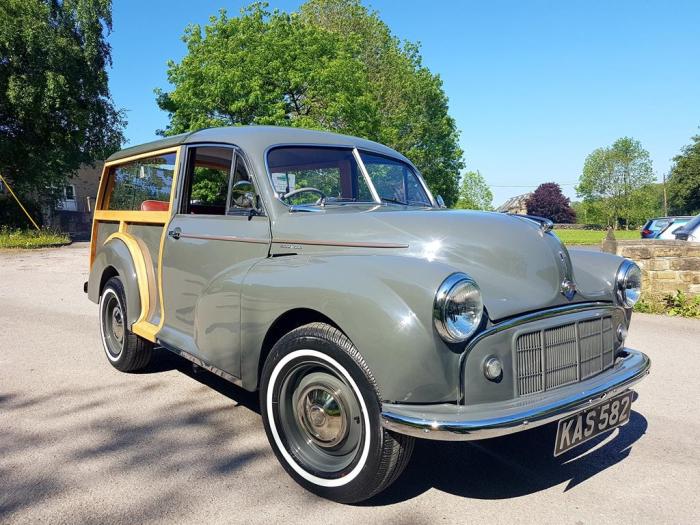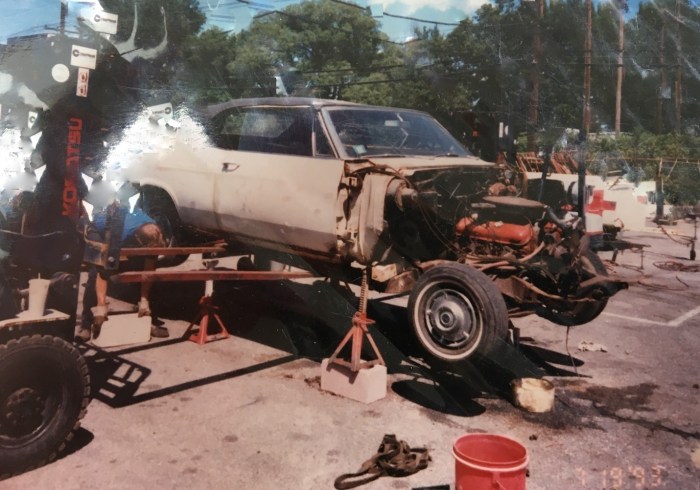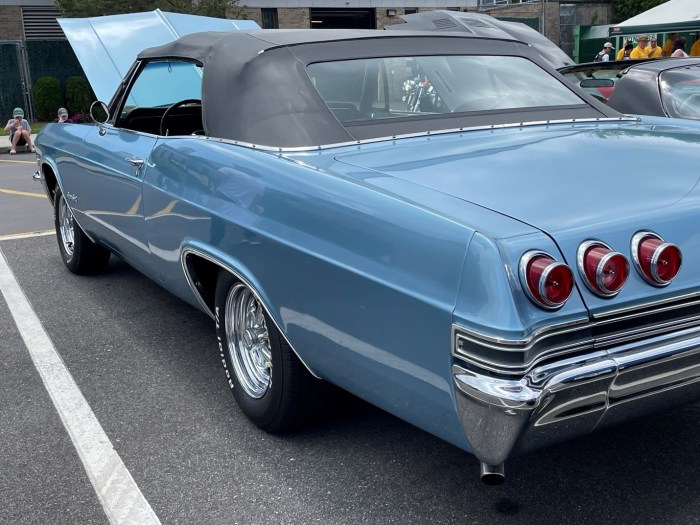Classic car restoration costs can vary significantly depending on a multitude of factors. This guide delves into the intricacies of these costs, providing a detailed breakdown of the elements that impact the overall budget, including labor, parts, materials, restoration techniques, timelines, and project management.
Whether you’re a seasoned enthusiast or a first-time restorer, this comprehensive analysis will equip you with the knowledge to navigate the restoration process with confidence.
Restoration Costs Breakdown

Classic car restoration costs vary widely depending on several factors, including the make and model of the car, the extent of the damage, and the quality of the restoration desired. However, there are some general factors that contribute to the cost of a classic car restoration.
The most significant factor is labor. Restoring a classic car is a labor-intensive process, and the cost of labor will vary depending on the skill and experience of the mechanic. The more complex the restoration, the more labor hours will be required, and the higher the cost will be.
Parts and materials are another major expense. Classic car parts can be difficult to find, and the cost of these parts can vary significantly. The quality of the parts used will also affect the cost of the restoration. Using original parts will typically cost more than using aftermarket parts, but it will also result in a more authentic restoration.
Labor Costs
The cost of labor for a classic car restoration can vary significantly depending on the complexity of the project. A simple restoration, such as a paint job or interior refresh, may only require a few hundred dollars in labor costs.
However, a more complex restoration, such as a full frame-off restoration, can easily cost thousands of dollars in labor costs.
Obtain a comprehensive document about the application of Classic car insurance quotes that is effective.
Parts and Materials Costs
The cost of parts and materials for a classic car restoration can also vary significantly depending on the make and model of the car. Some parts, such as body panels and trim, can be difficult to find and may be very expensive.
Other parts, such as engine and transmission components, may be more readily available and less expensive.
Other Costs
In addition to labor and parts costs, there are a number of other costs that can be associated with a classic car restoration. These costs can include:
- Sandblasting and painting
- Chrome plating
- Upholstery
- Electrical work
- Mechanical work
Labor Costs

Labor costs represent a significant portion of the overall classic car restoration budget. The experience and skill level of the mechanic, as well as the complexity of the restoration project, play a crucial role in determining the labor rates.
Finding reputable restoration shops and negotiating fair labor costs are essential to ensuring a successful restoration. Here are some tips to consider:
Finding Reputable Restoration Shops
- Get recommendations from classic car clubs, forums, and other car enthusiasts.
- Check online reviews and testimonials to gauge customer satisfaction.
li>Visit the shop in person to assess the facilities, equipment, and overall professionalism.
Negotiating Labor Costs
- Obtain written estimates from multiple shops to compare labor rates and services offered.
- Be clear about the scope of work and the desired level of restoration.
- Negotiate payment terms and timelines to avoid misunderstandings and ensure project completion within budget.
Parts and Materials

The restoration of classic cars is a labor of love, and no detail is too small to overlook. Sourcing high-quality parts and materials is paramount to ensure a successful and authentic restoration. Original equipment manufacturer (OEM) parts are the ideal choice, but they can be difficult to find and expensive.
For rare or discontinued parts, aftermarket options may be available. However, it’s crucial to thoroughly research the reputation and quality of aftermarket parts suppliers. Balancing authenticity with affordability is a delicate act. Restorers must carefully consider the importance of preserving originality versus the cost of sourcing OEM parts.
Aftermarket Parts
Aftermarket parts offer a cost-effective alternative to OEM parts, but it’s important to note that they may not be of the same quality or fit as original components. Researching the reputation of aftermarket parts suppliers and reading reviews from other restorers can help ensure you’re getting high-quality parts.
OEM Parts
OEM parts are the ideal choice for classic car restoration as they are made to the exact specifications of the original parts. However, they can be difficult to find, especially for older vehicles, and can be expensive.
Restoration Techniques: Classic Car Restoration Costs
Restoring a classic car involves a range of techniques that aim to bring the vehicle back to its original condition or enhance its value. These techniques include paint refinishing, bodywork, and engine rebuilding, each with its own advantages and disadvantages in terms of cost and complexity.
Paint refinishing involves removing the old paint, repairing any imperfections in the bodywork, and applying a new paint job. This technique can significantly improve the appearance of the car, but it can also be expensive, especially if the car has a complex paint scheme or requires extensive bodywork.
Bodywork
Bodywork involves repairing or replacing damaged body panels, such as fenders, doors, and hoods. This technique is essential for restoring the structural integrity of the car and ensuring that it meets safety standards. However, bodywork can be time-consuming and labor-intensive, making it one of the most expensive aspects of classic car restoration.
Engine Rebuilding
Engine rebuilding involves disassembling the engine, inspecting and replacing worn or damaged parts, and reassembling the engine to its original specifications. This technique is necessary for restoring the performance and reliability of the car, but it can also be expensive, especially if the engine requires extensive machining or replacement parts.
In addition to these traditional restoration techniques, there are also a number of innovative techniques that can be used to enhance the value of a classic car. These techniques include:
- Custom paint jobs:These paint jobs involve applying unique or intricate designs to the car, which can significantly increase its value.
- Performance upgrades:These upgrades involve modifying the engine, suspension, or brakes of the car to improve its performance.
- Interior customization:These customizations involve modifying the interior of the car to make it more comfortable or luxurious.
The cost of restoring a classic car can vary significantly depending on the condition of the car, the techniques used, and the materials used. However, the value of a restored classic car can often exceed the cost of restoration, making it a worthwhile investment for many car enthusiasts.
Timelines and Project Management
Establishing realistic restoration timelines and budgets is crucial for the success of any classic car restoration project. Setting clear expectations helps avoid delays, cost overruns, and frustration. Effective project management involves careful planning, communication, and coordination among all parties involved.
Strategies for Effective Project Management, Classic car restoration costs
- Create a detailed restoration plan:Artikel the scope of work, materials required, and estimated timeline.
- Set realistic deadlines:Allow ample time for each task, considering the complexity and potential setbacks.
- Establish a clear budget:Determine the total cost of the project, including labor, parts, and materials.
- Communicate regularly:Keep all stakeholders informed of progress, challenges, and any changes to the plan.
- Monitor progress:Track milestones and identify areas where adjustments may be necessary.
Tips for Avoiding Delays and Staying Within Budget
- Choose the right restoration shop:Select a reputable and experienced shop with a proven track record.
- Get multiple quotes:Compare estimates from different shops to ensure you’re getting the best value.
- Set clear expectations:Communicate your goals and budget to the shop to avoid misunderstandings.
- Be prepared for unforeseen expenses:Allocate a contingency fund for unexpected costs that may arise during the restoration process.
- Stay involved in the process:Regularly visit the shop to monitor progress and make decisions as needed.
Conclusive Thoughts
Understanding the complexities of classic car restoration costs is crucial for ensuring a successful project. By carefully considering the factors Artikeld in this guide, you can establish realistic budgets, timelines, and strategies to bring your dream restoration to life. Remember, the journey of restoring a classic car is not just about the end result; it’s about the passion, dedication, and the timeless allure of these automotive icons.